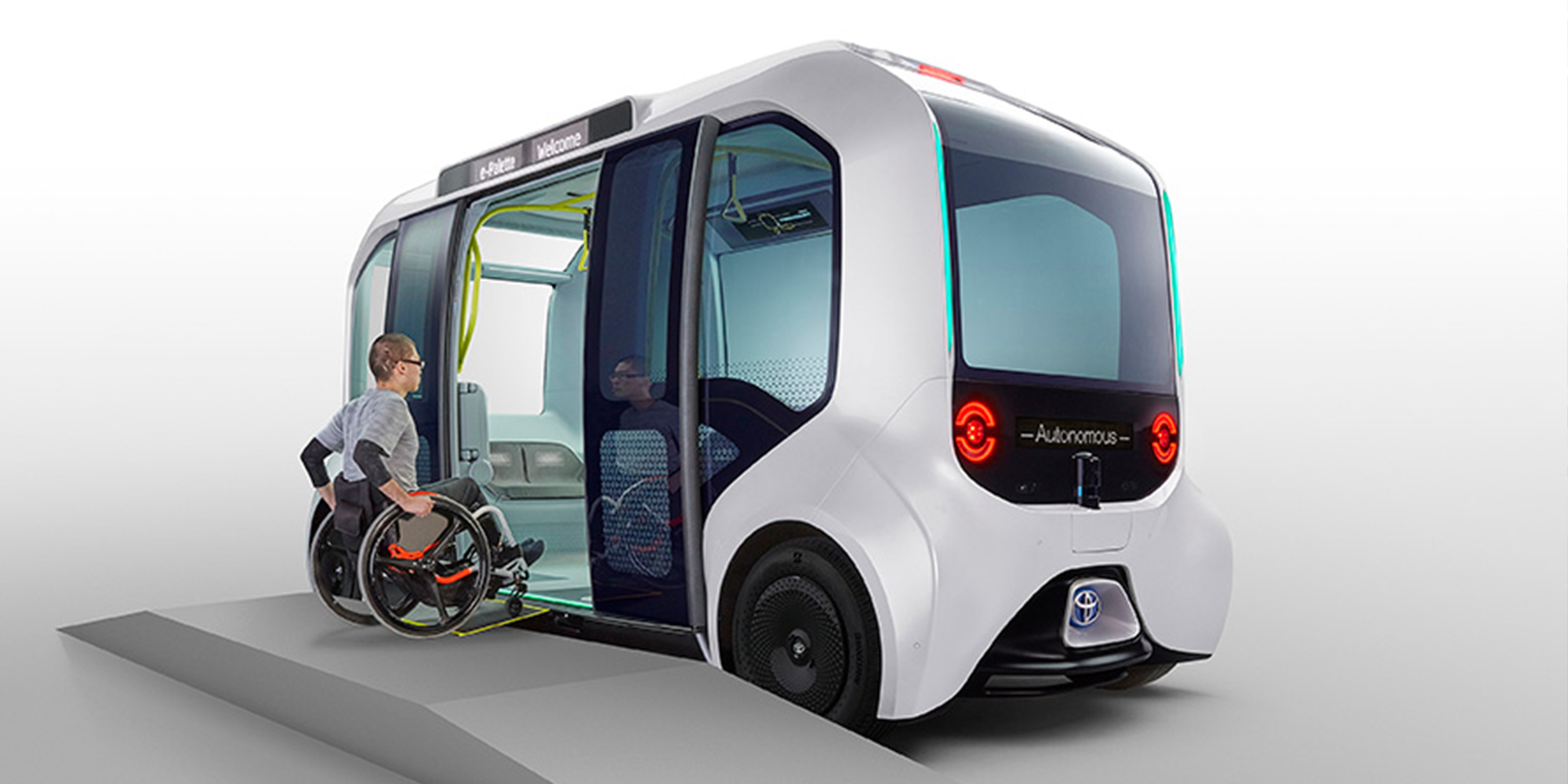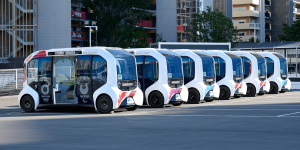
Toyota Motor Corporation has announced an immediate halt to all of its e-Palette self-driving transportation pods operating at the Tokyo Paralympic Games. The decision comes on the heels of an accident that took place in the Paralympic Village yesterday, when a Toyota self-driving electric vehicles collided with a visually impaired athlete, injuring them.
While Toyota remains a globally recognized automaker specializing in ICE and hydrogen fuel cell vehicles, it has also been a prominent sponsor for the Olympic and Paralympic Games. In 2015, the automaker signed an eight-year contract reportedly valued at around $1 billion.
With the 2020 Olympics and Paralympics announced for the company’s home country of Japan, Toyota used the events to showcase new technologies to the public. This included its LQ self-driving electric vehicle, although it remains a mere concept.
Following the introduction of the LQ EV, Toyota also announced it would implement up to 20 of its e-Palette self-driving pods to the 2020 Olympic and Paralympic Games in Tokyo.
When the Tokyo Games-specific e-Palettes were unveiled in 2019, Toyota explained how the pods would autonomously transport athletes around the Olympic Village using low-speed SAE level 4 automated technology.
Yesterday, however, Toyota helped demonstrate that Level 4 self-driving technology may not quite be where it needs to be for human safety, especially for pedestrians.
Toyota halts all e-Palette pods at 2020 Tokyo Paralympic Games
According to a report from Reuters, Toyota Motor Corporation has stopped the operations of all of its self-driving e-Palette pods at the Tokyo Paralympic Games.

The decision comes one day after an e-Palette driving through the Paralympic village struck a pedestrian who happened to be a visually impaired athlete competing in the games on Saturday.
According to Toyota, the self-driving vehicle had stopped at a T-junction and was about to make a turn under manual control of the operator using a joystick. The vehicle then collided with the athlete going at a speed of around 1 or 2 km/hr.
Toyota Chief Executive Akio Toyoda apologized for the incident and spoke about the difficulties Toyota has faced during the Paralympic Games in Tokyo, trying to remain especially conscious of pedestrians with disabilities:
A vehicle is stronger than a person, so I was obviously worried about how they were. It shows that autonomous vehicles are not yet realistic for normal roads.
Toyoda said he offered to meet the injured athlete but was unable to do so. He stated that Paralympic officials had told him that the athlete remained conscious after the collision and was taken to the medical center at the athlete village for treatment. The athlete was also able to walk back to their residence.
Toyota said it was cooperating with a local police probe to determine the cause of the accident. The automaker also shared plans to also conduct its own investigation and work alongside the Olympic and Paralympic Committees in Tokyo to ensure this doesn’t happen again.
The 2020 Tokyo Paralympic Games began this week and continue through September 5th, although athletes will have to find other ways around the village without Toyota’s e-Palettes.
You can view the full apology from Toyoda on behalf of Toyota below:
Also Read: Village Ways – New Approaches to Sustainable Tourism in Rural India
While few of the readers consider it a manual error, some of the readers feels that autonomous vehicles are not yet realistic for normal roads. Sharing below the comments from few readers:
Zorro Cortes •
It shows that autonomous vehicles are not yet realistic for normal roads.
No, it shows that your vehicle is not autonomous and should not be used on any road – even when geo-fenced. It’s probably true that autonomous vehicles are not yet realistic for normal roads, but Toyota doesn’t have any of those. This looks like a comment specifically designed to throw shade on what others are doing better than Toyota – and it wouldn’t be the first case of that either. I wouldn’t go so far as to say they staged the whole thing to try to poo-poo autonomy but the comment itself seems specifically designed for that.
This incident has nothing at all to do with autonomy as a whole.
NQNQ •
According to Toyota, the self-driving vehicle had stopped at a T-junction and was about to make a turn under manual control of the operator using a joystick. The vehicle then collided with the athlete going at a speed of around 1 or 2 km/hr.
This had nothing to do with autonomy. Why would Toyota shut down these non-polluting vehicles when it was human error? ??
PaulScott58 •
I don’t know, it feels like you buried the lede. Unless the AV vehicle caused the crash, the story could be that a human, who took control of an AV, caused the vehicle to hit the pedestrian. Were there any crashes of any kind due to the AV while not under the control of a human? I’m not trying to side with Toyota, they are a bad legacy OEM trying to stop electric mobility, but it does not sound like it was their vehicle’s fault.
Renaissance •
“the self-driving vehicle … was under manual control of the operator using a joystick. The vehicle then collided with the athlete going at a speed of around 1 or 2 km/hr.”
Self-driving vehicles… unsafe at any speed!
What are your views on this incident? Share your views with us in the comment section.
This article is first published in https://electrek.co/ on 27th August 2021.
Original Article Author: Scooter Doll
Leave a Reply